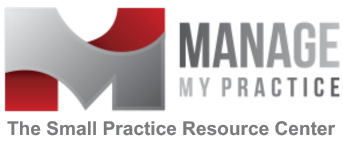Effective January 1, 2013, Medicare and other payers will pay for two new CPT codes (99495 and 99496) that are used to report physician or qualifying non-physician practitioner transitional care management (TCM) service for patients, following a discharge from a:
- Hospital
- Skilled Nursing Facility (SNF)
- Community Mental Health Center (CMHC)
- Outpatient observation
- Partial hospitalization

and including a transition to:
- Home
- Domiciliary
- Rest Home
- Assisted Living
These two codes require the medical decision-making to be of moderate to high complexity. Each code encompasses one face-to-face visit and non face-to-face services, for instance, arranging home health agencies for patient care.
Codes are selected based on medical decision-making associated with the patient’s condition, the time when the communication is initiated with the patient, and the time when the face-to-face encounter occurs following discharge. The first face-to-face encounter is included. The codes may be reported only once per 30 calendar days. See the full code description at the end of this article.
The following are FAQs on the codes with answers provided by CMS.
Q: What date of service should be used on the claim?
A: The 30-day period for the TCM service begins on the day of discharge and continues for the next 29 days. The reported date of service should be the 30th day.
Q: What place of service should be used on the claim?
A: The place of service reported on the claim should correspond to the place of service of the required face-to-face visit.
Q: If the codes became effective on Jan. 1 and, in general, cannot be billed until 29 days past discharge, will claims submitted before January 29th with the TCM codes be denied?
A: Because the TCM codes describe 30 days of services and because the TCM codes are new codes beginning on January 1, 2013, only 30-day periods beginning on or after January 1, 2013 are payable. Thus, the first payable date of service for TCM services is January 30, 2013.
Q: The CPT book describes services by the physician’s staff as “and/or licensed clinical staff under his or her direction.” Does this mean only RNs and LPNs, or may medical assistants also provide some parts of the TCM services?
A: Medicare encourages practitioners to follow CPT guidance in reporting TCM services. Medicare requires that when a practitioner bills Medicare for services and supplies commonly furnished in physician offices, the practitioner must meet the “incident to” requirements described in Chapter 15 Section 60 of the Benefit Policy Manual 100-02.
Q: Can the services be provided in a Federally Qualified Health Center (FQHC) or Rural Health Clinic (RHC)?
A: While FQHCs and RHCs are not paid separately by Medicare under the Physician Fee Schedule (PFS), the face-to-face visit component of TCM services could qualify as a billable visit in an FQHC or RHC. Additionally, physicians or other qualified providers who have a separate fee-for-service practice when not working at the RHC or FQHC may bill the CPT TCM codes, subject to the other existing requirements for billing under the MPFS.
Q: If the patient is readmitted in the 30-day period, can TCM still be reported?
A: Yes, TCM services can still be reported as long as the services described by the code are furnished by the practitioner during the 30-day period, including the time following the second discharge. Alternatively, the practitioner can bill for TCM services following the second discharge for a full 30-day period as long as no other provider bills the service for the first discharge. CPT guidance for TCM services states that only one individual may report TCM services and only once per patient within 30 days of discharge. Another TCM may not be reported by the same individual or group for any subsequent discharge(s) within 30 days.
Q: Can TCM services be reported if the beneficiary dies prior the 30th day following discharge?
A: Because the TCM codes describe 30 days of care, in cases when the beneficiary dies prior to the 30th day, practitioners should not report TCM services but may report any face-to-face visits that occurred under the appropriate evaluation and management code.
Q: Medicare will only pay one physician or qualified practitioner for TCM services per beneficiary per 30 day period following a discharge. If more than one practitioner reports TCM services for a beneficiary, how will Medicare determine which practitioner to pay?
A: Medicare will only pay the first eligible claim submitted during the 30 day period that commences with the day of discharge. Other practitioners may continue to report other reasonable and necessary services, including other E/M services, to beneficiaries during those 30 days.
Open Door Forum Call Including TCM Code Information
CMS is holding a Open Door Forum on Tuesday, March 12, 2013, at 2:00 p.m. Eastern (ET) which will include some information about TCM codes, and an opportunity for listeners to ask individual questions of the presenters.
CALL AGENDA: (subject to change)
I. Opening Remarks
- Chair – Stewart Streimer (CM)
- Co-Chair – Dr. William Rogers (OPE)
- Moderator – Barbara Cebuhar (in lieu of Matthew Brown, OPE)
II. Announcements & Updates
- Physician Compare Website Redesign
- DMEPOS Competitive Bidding
- Ordering & Referring
- Transitional Care Management:
- Health Insurance Marketplace
III. Open Q&A
Open Door Participation Instructions:
To participate by phone:
Dial: 1-800-837-1935 & Reference Conference ID: 78871126. Call in 15 minutes before the start of the call.
Persons participating by phone do not need to RSVP
TTY Communications Relay Services are available for the Hearing Impaired. For TTY services dial 7-1-1 or 1-800-855-2880. A Relay Communications Assistant will help.
Encore: 1-855-859-2056; Conference ID: 78871126.
Encore is an audio recording of this call that can be accessed by dialing 1-855-859-2056 and entering the Conference ID. This recording will be accessible beginning 2 hours after the ODF and expires after 3 business days.
99495 – 99496 Management Of Transitional Care Services
These codes include:
- Moderate to high complexity medical decision making needs during care transition
- First interaction (can be face-to-face, by telephone, or electronic) with patient or his/her caregiver and must be done within 2 working days of discharge. If two separate attempts are made in a timely manner, but are unsuccessful and other TCM criteria are met, the service may be reported. Medicare, however, expects attempts to communicate to continue until they are successful.
- Initial face-to-face interaction within described time frame (99495 = 14 days and 99496 = 7 days) and include medication management
- All services from the discharge day up to 29 days post-discharge
Examples of non face-to-face services provided by physicians and non-physician providers included in TCM codes are:
- Arrangement of follow-up and referrals with community resources and providers
- Contacting qualified health care professionals for specific problems of patient
- Review of discharge information
- Need for follow-up care review based on tests and treatments
- Patient, family and caregiver education
Note that the non-physicians who may bill TCM codes are Nurse Practitioners (NPs), Physician Assistants (PAs), Clinical Nurse Specialists (CNSs), and Certified Nurse Midwives (CNMs), unless they are otherwise limited by their state scope of practice.
Physicians reporting TCM codes are most likely to be primary care physicians, however other specialties may report them. Both CPT and Medicare prohibit a physician who reports a service with a global period of 10 or 90 days from also reporting the TCM service.
Examples of non face-to-face services provided by staff under the guidance of physicians and non-physician providers included in TCM codes are:
- Caregiver education to family or patient, addressing independent living and self-management
- Communication with patient and all caregivers and professionals regarding care
- Determining which community and health resources would benefit the patient
- Providing communication with home health and other patient-utilized services
- Support for treatment and medication adherence
- The facilitation of services and care
These TCM codes do not include (and may be billed separately):
- E/M services after the first face-to-face visit
- Tests and procedures
The following services cannot be billed during the time period covered by transitional care:
- care plan oversight services (99339, 99340, 99374 – 99380)
- prolonged services without direct patient contact (99358, 99359)
- medical team conferences (99366 – 99368)
- end stage renal disease services (90951 – 90970)
- online medical evaluation services (98969, 99444)
- education and training (98960 – 98962, 99071, 99078)
- anticoagulant management (99363, 99364)
- telephone services (98966 – 98968, 99441 – 99443)
- preparation of special reports (99080)
- analysis of data (99090, 99091)
- complex chronic care coordination services (99481X – 99483X)
- medication therapy management services (99605 – 99607)
99495 – Transitional Care Management Services (Medicare reimburses $163.99 for non-facility) with the following required elements:
- Communication (direct contact, telephone, electronic) with the patient and/or caregiver within 2 business days of discharge.
- Medical decision making of at least moderate complexity during the service period
- Face-to-face visit within 14 calendar days of discharge
99496 – Transitional Care Management Services (Medicare reimburses $231.36 for non-facility) with the following required elements:
- Communication (direct contact, telephone, electronic) with the patient and/or caregiver within 2 business days of discharge.
- Medical decision making of high complexity during the service period
- Face-to-face visit within 7 calendar days of discharge (note that discharge and TCM may not be billed on the same day.)
What questions do you need to answer in your practice to insure you are correctly using the TCM codes?
- Have you spoken with all payers to determine which ones will reimburse you for TCM codes?
- If you do not see your patient in the hospital, how will you know your patient is in the hospital? Most hospitals/facilities should call you to schedule a follow-up visit for the patient, triggering a TCM event. If this is not being done, how will you know your patient has been discharged? Hospitals have a vested interest in making this work as they want to prevent readmissions, so they should be helpful in working on a communication plan.
- Who in your practice has primary responsibility for managing the discharged patients and triggering the first contact and face-to-face visit within the time frames? What manual or electronic tickler system will be used to alert staff?
- What forms for a paper chart or templates for an EMR will be needed for documentation of all services provided?
- Do your providers know the difference between moderate and high complexity medical decision making? If not, get them up to speed.
- Will your billing system flag the claim with the TCM code to be dropped at 30 days, or will you need an alert system to be sure the claim is dropped appropriately? Can your billing system be programmed to hold charges to review for TCM patients that will not be paid during the TCM period in addition to the TCM code? If not, what’s your plan?

